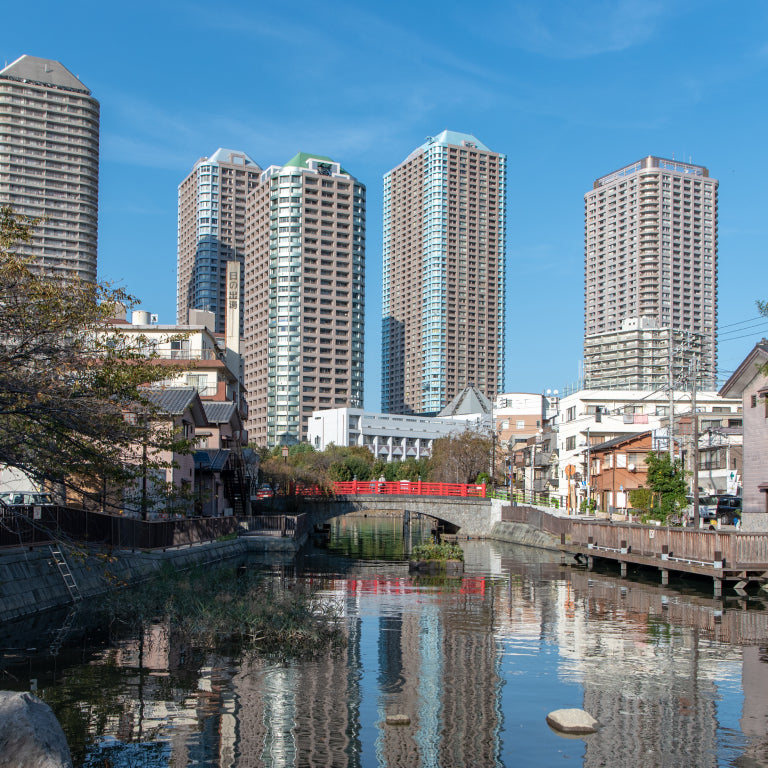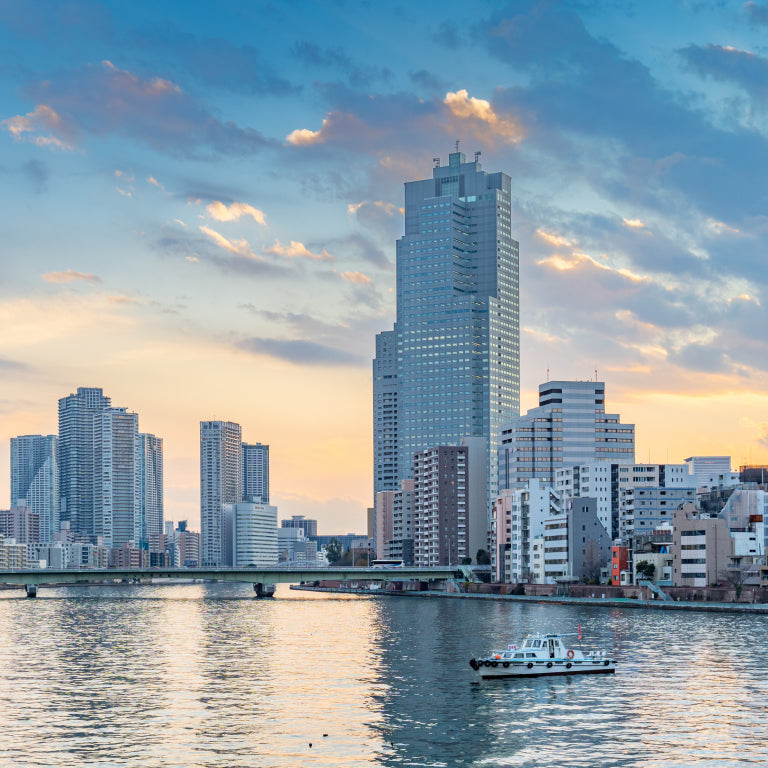Getting to Know Chuo Ward Chuo-ku
Newness and tradition coexist,
A stylish, stylish town, Chuo-ku

Chuo-ku, a city that can be said to be the center of Tokyo and the center of Japan.
This city has a variety of faces. Tsukiji Market where you get up the first time in Tokyo and the lively voice of auction fly. Business districts in Nihonbashi, Yaesu, and Kabuto-cho, which are energetically leading the Japanese business community. Ginza is a stylish city with a fashionable and elegant adult face. Ningyocho, Tsukuda, and Tsukishima neighborhoods full of downtown atmosphere where the Edo child character remains.
Chuo-ku is a city full of stylishness and vitality, a town full of stylishness.
More than half of Chuo-ku is a landfill in the Edo period. With the birth of Edo shogunate, the development of Chuo-ku begins. Commerce flourished mainly in Nihonbashi, and Edo culture, represented by Kabuki, flourished. In the Meiji era, Chuo-ku was always at the forefront of the era in terms of economic, cultural and information, such as becoming a window for Western culture.
The future city, waterfront zone, which is attracting attention now.
A new face of Chuo-ku, which continues to change in the 21st century while cultivating history and tradition. Chuo-ku, which is full of smart and lively, is a wonderful city where you can show a new face every time you visit.
 Walking advice in Chuo-ku
Walking advice in Chuo-ku

Chuo-ku is located almost in the center of Tokyo's 23 wards, as indicated by the ward name, and its area extends in a belt along the right bank of the Sumida River downstream of Ryogoku Bridge, and most of the land was born from landfills since the Edo period. Therefore, the slope is a very slow terrain due to undulations and steep terrain.
Chuo-ku includes JR Tokyo Station, the gateway to land, and Nihonbashihakozakicho has the Tokyo City Air Terminal, an empty gateway.
Also, you can't miss the entrance of the sea, Tokyo Port Harumi Wharf. Various cruise ships can carry many tourists from across the sea.
And the subway is convenient to see Chuo-ku every corner. Nine lines pass vertically and horizontally through the ward, and a total of 29 stations are set up. In addition, please use it well as the bus route is substantial.
But really, I want you to walk as much as possible in Chuo-ku, take time, and see each and every town. You will surely have fresh surprises, fun discoveries, and delicious encounters.

37 charming towns in Chuo-ku,
Introduction in five areas
[Main tourist attractions]
Nihonbashi-Japan Road Signpost
Bank of Japan and Museum of Money
Mitsui Memorial Museum
Artizon Museum
Long-established and famous shops
River cruise
[Main tourist attractions]
4, Ginza Intersection
Kabuki-Za
Pedestrian Parade (Ginza Street)
The birthplace of Ginza
Tour of Ginza Hatcho-jinja Shrine
Gallery
[Main tourist attractions]
amazake Yokocho
Nihonbashi Seven Lucky Gods
Wholesale district
Yagenbori fudoson
Bettara City
[Main tourist attractions]
Tsukiji Outer Market
Hamarikyu Onshi Garden
Tsukiji Honganji
Namiki-jinja Shrine
Sumida River Bridge Tour

[Main tourist attractions]
Tsukishima Monja Street
Sumiyoshi-jinja Shirine
Sumida River Terrace
Tsukuda Kobashi
Harumi Wharf
※Click on the place name to jump to the details page
History and Culture of Chuo-ku History and Culture of Chuo Ward
From the birth of Edo shogunate to the present day
Introducing the history and culture of Chuo-ku, which has been at the forefront of development.































